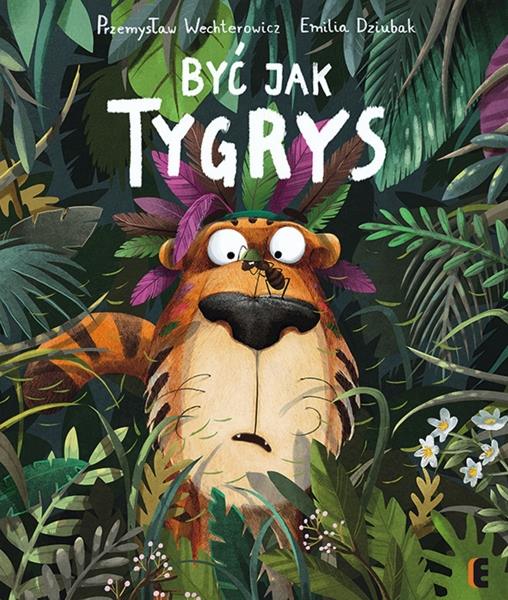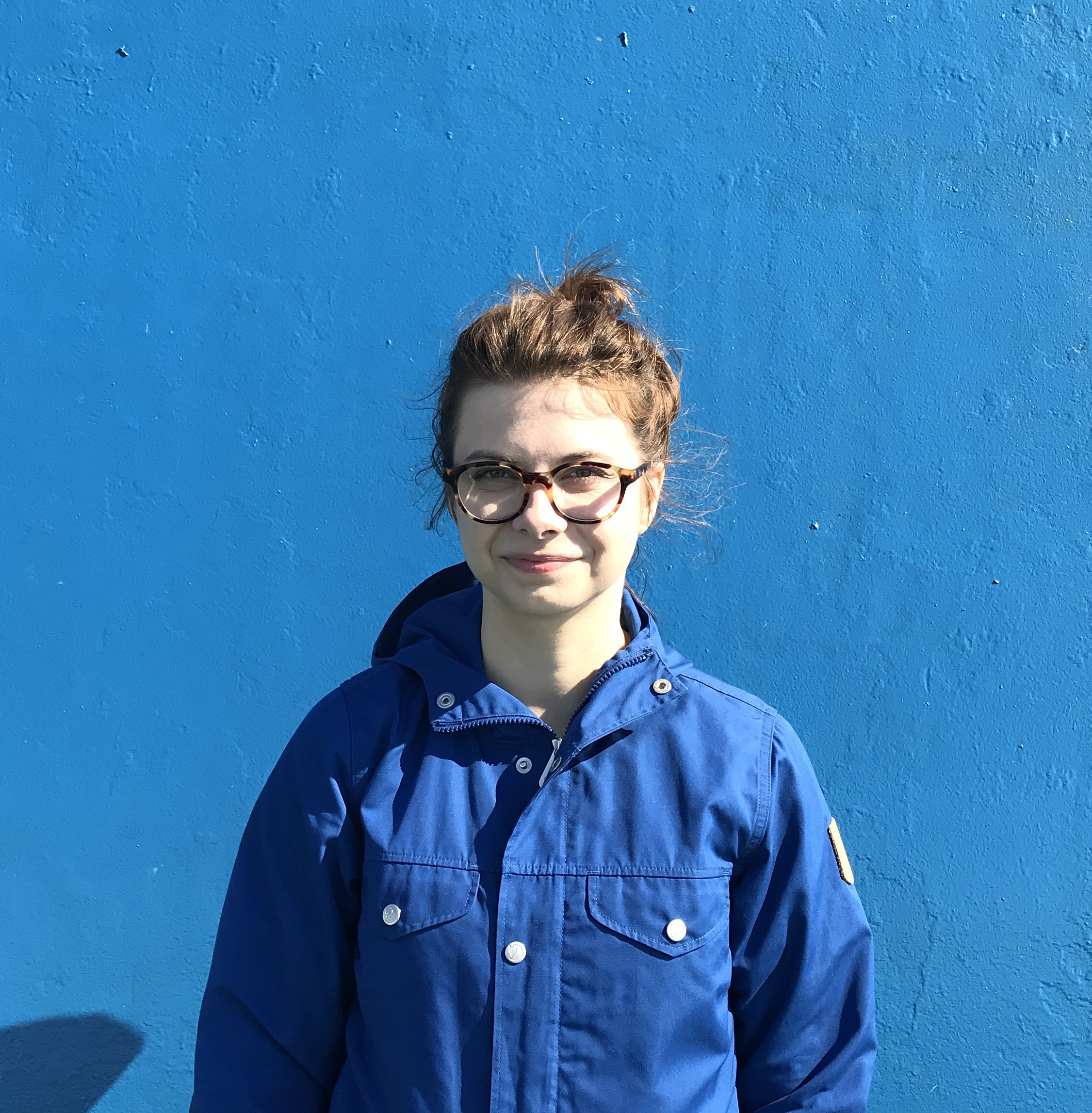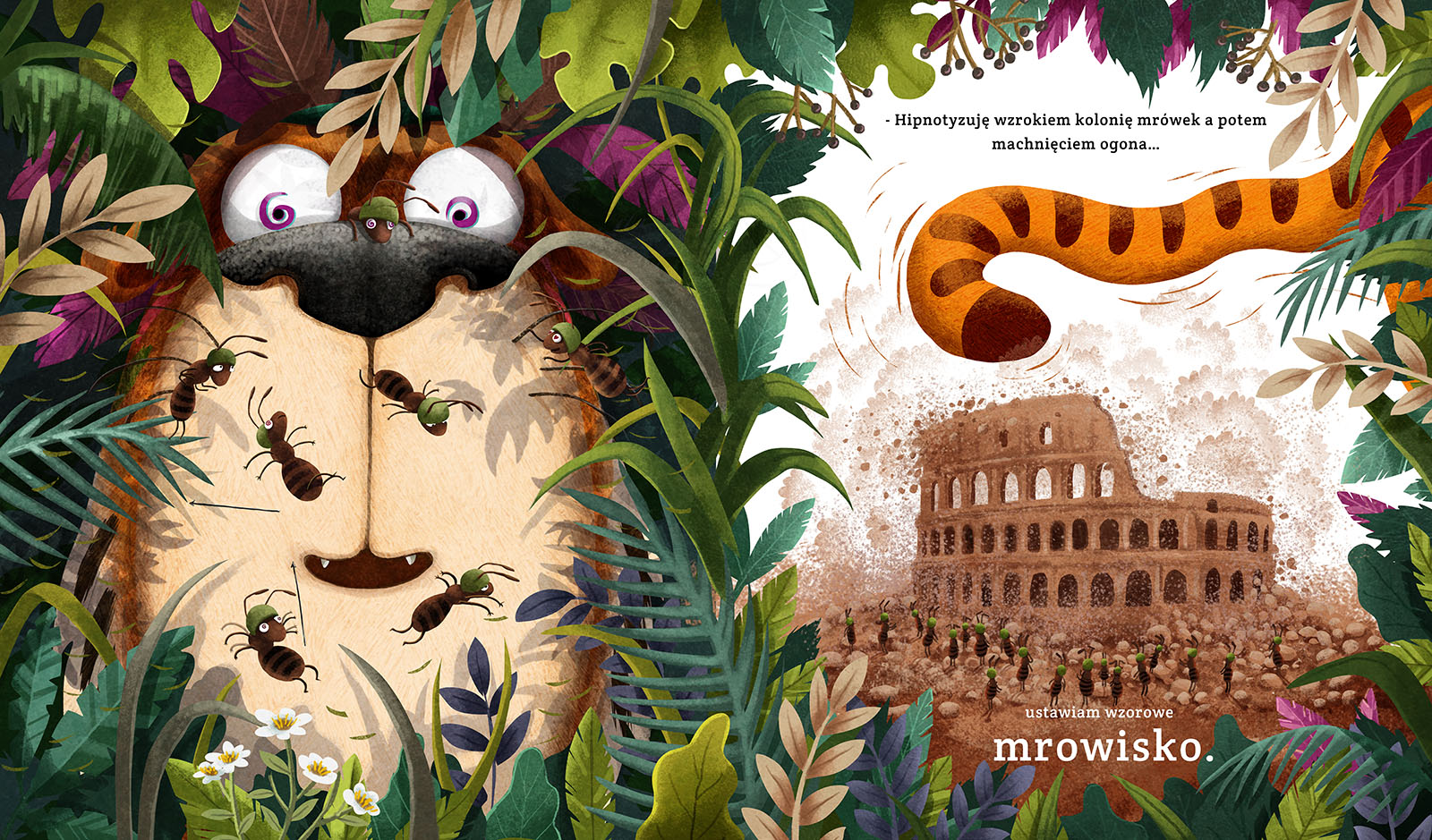Title of the work
Country of the First Edition
Country/countries of popularity
Original Language
First Edition Date
First Edition Details
Przemysław Wechterowicz, Emilia Dziubak, Być jak tygrys. Warszawa: Ezop, 2016, 32 pp.
ISBN
Genre
Illustrated works
Picture books
Target Audience
Children
Cover

Designed by Emilia Dziubak, courtesy of the author.
Author of the Entry:
Krzysztof Rybak, University of Warsaw, rybak.km@gmail.com
Peer-reviewer of the Entry:
Elżbieta Olechowska, University of Warsaw, elzbieta.olechowska@gmail.com
Susan Deacy, University of Roehampton, s.deacy@roehampton.ac.uk

Photograph by Piotr Dziubak, courtesy of the Illustrator.
Emilia Dziubak
, b. 1982
(Illustrator)
Emilia Dziubak graduated from the Academy of Fine Arts in Poznań (Poland) and now is mainly known for her children’s books illustrations. Since her debut in 2011 she has illustrated over 50 books by Polish and foreign authors (e. g. a new Polish edition of Mary Norton’s The Borrowers series published by Dwie Siostry). She also worked with publishers outside Poland, for example on Martin Widmark’s Lilla Sticka i landet Lycka published in Sweden in 2016. Besides children’s books she also publishes in many Polish magazines such as Wprost, Przekrój and Art & Business. Before Być jak tygrys [The Secret Life of a Tiger] she illustrated some of the other Przemysław Wechterowicz’s books: W pogoni za życiem [Chasing Life] (Ezop, 2012), Proszę mnie przytulić [Please, Hug me] (Ezop, 2013), and Uśmiech dla żabki [A Smile for a Froggie] (Ezop, 2014). For Proszę mnie przytulić she has received a Warsaw Literary Award in 2014. Her works were presented at Tu czy tam? Współczesna polska ilustracja dla dzieci [Here or There? Contemporary Polish Illustration for Children] exhibition in Zachęta National Gallery of Art in Warsaw in 2016 (accessed: January 30, 2017).
More information about the artist and her works see here (accessed: July 3, 2018).
Bio prepared by Krzysztof Rybak, University of Warsaw, rybak.km@gmail.com
Questionnaire
1. What drew you to working with Classical Antiquity and what challenges did you face in selecting, representing, or adapting particular myths or stories?
I assume that the answer would not be original – there is no specific reason for the use of the Roman Colosseum in the book [Być jak Tygrys (The Secret Life of a Tiger)]. I decided to use it because it is well known as a building related to big achievement, important for art history and known by everyone. I wanted to show that the Tiger used his talent to build the Colosseum – something that would impress people of ancient times. I wanted to create something very impressive and find the best way to picture it is using classical content, something known by everyone. It is highly probable that children know what the Colosseum is as well as they know the Eiffel tower.
2. Do you have a background in classical education (Latin or Greek at school or classes at the University?) What sources are you using? Scholarly work? Wikipedia? Are there any books that made an impact on you in this respect?
The books that made impact on my perception of antiquity is a Polish series „Art of the World” („Sztuka świata”), a textbook I learned from in the course of my education, during art history studies. Today I use mainly iconography accessible by the Internet.
3. Did you think about how Classical Antiquity would translate for young readers, esp. in Poland?
I think that this topic is appreciated by children. I am sure that if it is done well, a project about antiquity may interest young people. For sure it should not be a transfer of knowledge consisting of hard facts themselves – more likely something with elements of adventure, humour or with extraordinarily illustrations.
4. How concerned were you with "accuracy" or "fidelity" to the original? (another way of saying that might be — that I think writers are often more "faithful" to originals in adapting its spirit rather than being tied down at the level of detail — is this something you thought about?)
Drawing a classical building does not require paying attention to details [in Być jak tygrys (The Secret Life of a Tiger)]. These are forms known well enough so their shapes, sometimes even contours, suggest immediately the concrete object.
Prepared by Krzysztof Rybak, University of Poland, rybak.km@gmail.com

Przemysław Wechterowicz (Author)
Przemysław Wechterowicz is a Polish children’s literature author. He debuted in 2008 with Wielkie marzenia [Great Dreams]. Since then he has published over 20 books, including award–winning titles such as Proszę mnie przytulić [Please, Hug Me.] since 2013 (Warsaw Literary Award in 2014).
Bio prepared by Krzysztof Rybak, University of Warsaw, rybak.km@gmail.com
Translation
English: The Secret Life of a Tiger, trans. Antonia Lloyd-Jones, Lake Forest, CA: Words & Pictures, 2017.
Russian: Быть Тигром [Byt' tigrom], Sankt Petersburg, Moscow: Rech', 2017.
Summary
The story is about a tiger who wanders in the jungle doing things that tigers love the most: jumping, eating, relaxing etc. The text itself lacks classical elements, but in one of the illustrations, we see an anthill shaped like the Colosseum in Rome. The text on the page says that the tiger hypnotizes ants with its eyes and then builds a model anthill up with just one sweep of its tail.
Analysis
According to the artist herself, there is no specific reading for using this particular classical motif. It should be seen as a great and magnificent achievement of ants and the tiger – not of man in the creation of Być jak tygrys. That may draw the reader’s attention to an amazing animal world full of intelligent creatures and their craft and other aspects of life similar to humans. But on the other hand, it may be just a glimpse of beautiful classical architecture and art and some incentive to discover the ancient world not only through mythology or history but also through craft.
Addenda

The page with the illustration inspired by the Roman Colosseum, courtesy of the author.


